#diaprepes root weevil
Explore tagged Tumblr posts
Text
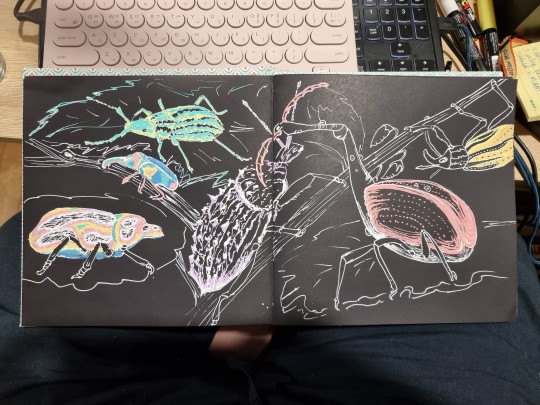
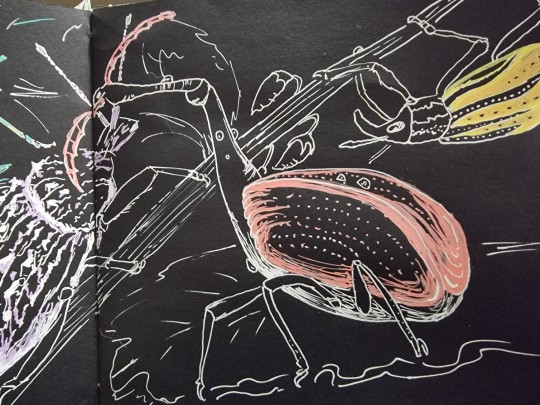
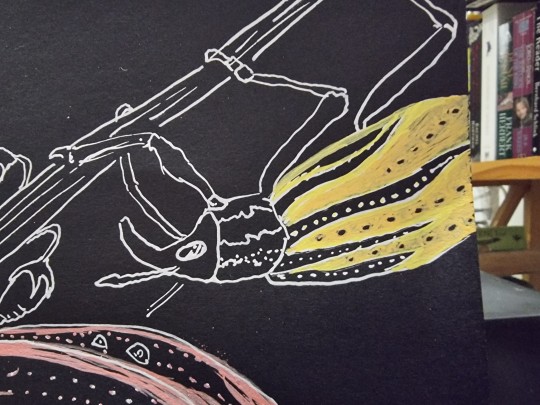
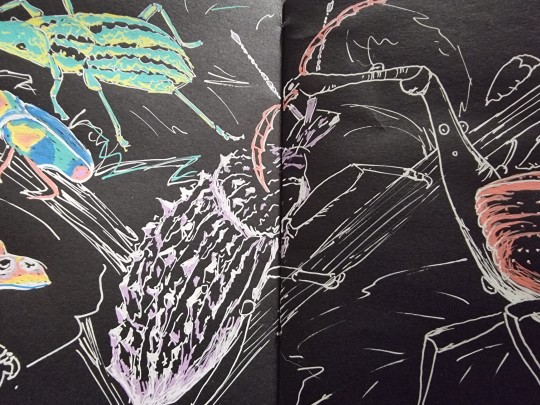

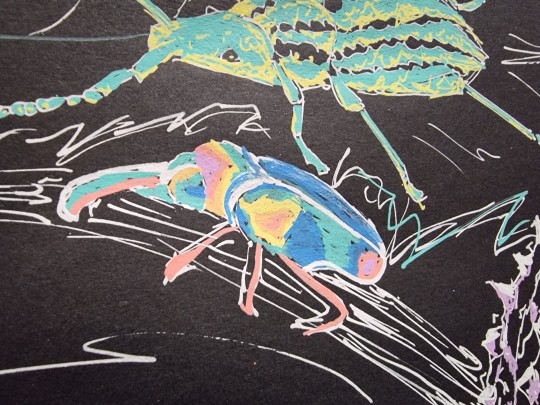

#weevils#weevil#weevil challenge#insects#nature#animals#art#entomology#bugs#drawings#posca pens#invertebrates#30 day challenge#30 day weevil challenge#giraffe weevil#diaprepes root weevil#Leptopius gladiator#Sesbania clown weevil#clown weevil#Painted weevil#Compsus viridivittatus#Eurhinus magnificus#30 days of weevils#30daysofweevils
81 notes
·
View notes
Text

I FOUND A DIAPREPES ROOT WEEVIL AT SCHOOL TODAY!!!! SPLENDID. MADE MY DAY SO MUCH BETTER
#arwen yaps#how did i find him on a thursday#doesnt he know weevils only exist on wednesday#hence the name weevil wednesday#weevil#diaprepes root weevil#bugblr#bugs#beetles
16 notes
·
View notes
Text
30 days of weevils, day 2!

Day 2: Diaprepes Root Weevil!

My tablet’s dead so here’s a traditional one <3
#nanon rambles#30daysofweevils#30 days of weevils#<33333#weevil#Diaprepes Root Weevil#root weevil#nanon draws
14 notes
·
View notes
Text

Day 5 of Invertober, the Citrus Root Weevil, also known as the Sugarcane Rootstock Borer Weevil...a mouthful.
Native to the Caribbean and accidently introduced to the US, this guy is actually invasive in California, Texas and Florida.
#citrus root weevil#diaprepes root weevil#diaprepes abbreviatus#weevil#weevil art#invertober2023#invertober#autodesk sketchbook#my post#my art
18 notes
·
View notes
Text
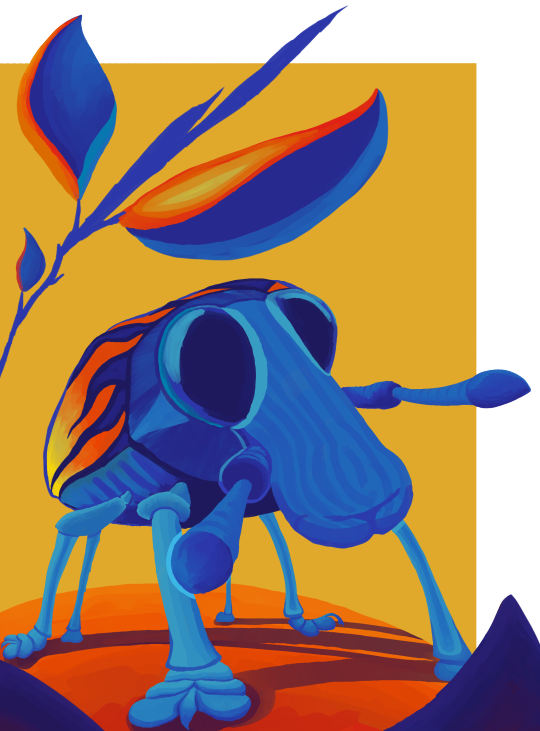
Invertober Day 5: Citrus Root Weevil (Diaprepes abbreviatus)
#got a little eyestrainy with this one oops#bug art#bugs#insects#coleoptera#weevils#invertober2023#invertober#beetles#bugblr#eyestrain#art#my art
2K notes
·
View notes
Text

Day 2 of the 30 Days of Weevils challenge brings us the fantastic Diaprepes Root Weevil (Diaprepes abbreviatus)!
This weevil is native to the Carribean and considered invasive to some parts of the United States. The larvae burrow down into soil to feed on plant roots, spreading to other areas via the soil's transportation. The color of its elytra vary between bright red to soft yellow, making for a very beautiful sunset coloration!
Reference image here.
#30daysofweevils#30 days of weevils#entomology#weevils#root weevil#scientific illustration#digital art#bugblr
28 notes
·
View notes
Text

Invertober Day 5- Citrus Root Weevil (Diaprepes abbreviatus)
Process video under the cut!
#invertober#invertober2023#invertober 2023#fossilforager invertober#bugs#weevil#citrus root weevil#october art#speedpaint#speed draw#artists on tumblr#digital art#ghostiezone#stuck-in-the-ghost-zone
14 notes
·
View notes
Text
Invertober 2023!
Invertober is back! The (mandatory) drawing challenge where you draw an invertebrate every day. It's for everyone and *mandatory.* Last year they had no ants on the list! I was very upset... this year there is one ant... an improvement, still so much more room to grow!
Let's shoot for 10 ants next year.
OK here is what you need to draw each day for the month:
Sunburst diving beetle (Themanectus marmoratus)
Silvery leaf cutter bee (Megachile leachella)
Little fire ant (Wasmannia auropunctata)
Emerald green snail (Papustyla pulcherrima)
Citrus root weevil (Diaprepes abbreviatus)
Coconut octopus (Amphioctopus marginatus)
Common banded hover fly (Syrphus ribesii)
Calico Crab (Hepatus epheliticus)
Elephant hawk moth (Deilephila elpenor)
Periodical cicada (Magicicada septendecim)
Fruit fly (Drosophila melanogaster)
Eelgrass isopod (Pentidotea resecata)
Devastating grasshopper (Melanoplus devastator)
Blue glaucus (Glaucus atlanticus)
Owlfly (Libelloides macaronius)
Fuchsia flatworm (Pseudoceros ferrugineus)
Blue morpho (Morpho peleides)
Reddish-brown stag beetle (Lucanus capreolus)
White-spotted jellyfish (Phyllorhiza punctata)
European mantis (Mantis religiosa)
Pink crab spider (Thomisus onustus)
Red velvet ant (Dasymutilla occidentalis)
Asian forest scorpion (Heterometrus spinifer)
African monarch (Danaus chrysippus)
Horned sea star (Protoreaster nodosus)
Torpedo bug (Siphanta acuta)
Iceland scallop (Chlamys islandica)
Striped pajama squid (Sepioloidea lineolata)
Tiger centipede (Scolopendra polymorpha)
Leopard slug (Limax maximus)
Halloween pennant (Celithemis eponina)

Let's goooo!
#invertober#invertober2023#drawing#drawings#ants#bugs#bugblr#invertebrates#antblr#drawing ants#artists on tumblr#drawing challange#mandatory#for everyone
11 notes
·
View notes
Text





omg i love bug train! in order of appearance (left to right) we got:
Monk skipper (Asbolis capucinus)
Brown Widow (Latrodectus geometricus)
Diaprepes root weevil (Diaprepes abbreviatus)
Little blue dragonlet (Erythrodiplax minuscula)
and (a personal favorite of mine!) Polistes dorsalis
these are all kinda old findings since i havent been able to get out in a while, but still fun to share!
Hey @willyeeton and everyone else, I was out today and found a lot of remains of stag beetles! It’s the largest beetle in Europe!
Click for better quality
Oh and cw bugs and dead things if anyone needs it




#i use inaturalist for identification#it gives you like an estimate for what it could be and then people in your area can pitch in and say what they think it is#it’s really fun#i think of it as completeing a pokedex lol
30 notes
·
View notes
Text
What it is called when a certain citrus root weevil's pancreas dies?
Type 1 Diaprepes.
#bugs#insects#beetles#weevils#bugblr#entomology#coleopterology#diabetes#type 1 diabetes#diaprepes root weevil#diaprepes abbreviatus
4 notes
·
View notes
Photo

I made a friend. 🙂
#bugs#insects#a good boy#diaprepes root weevil#weevil#tentative identification#diaprepes abbreviatus
2 notes
·
View notes
Photo








im entering a photo contest and cant pick which one photo i want to submit! please let me know which one you like best!
1 - diaprepes root weevil
2 - fulvous hairstreak (endangered)
3 - wood stork (endangered)
4 - great egret (cooling off in the heat)
5 - caribbean land hermit crab
6 - nerite snails
7 - florida burrowing owl (apparently not common outside my area?)
8 - common nighthawk
21 notes
·
View notes
Photo

Insects and Crop Loss
Plant-eating insects are responsible for the destruction of 20% of the world's crops every year.
Some, like the spotted stemborer (which attacks maize and sorghum in Africa and maize in Asia), target the plant as it grows. Others, like granary weevils (which attack wheat, rye and barley), lay their eggs in plants, which are then targeted by the larvae after the plant has been dried, processed, and stored. Beetles and moths are particularly predatory toward stored crops.
Learn more.
Diaprepes abbreviatus (citrus root weevil). Credit: Keith Weller/USDA [Public domain], via Wikimedia Commons
1 note
·
View note
Text
Weevil 7 came out...unfortunately...I'm so sorry...


Just... er, yep, sorry about that horn-headed weevil (Cerocranus extremus) You... You did not deserve that.
@30daysofweevils apologies, the other ones looked great








#weevils#weevil#weevil challenge#insects#nature#animals#art#entomology#bugs#drawings#posca pens#invertebrates#30 day challenge#30 day weevil challenge#giraffe weevil#diaprepes root weevil#Leptopius gladiator#Sesbania clown weevil#clown weevil#Painted weevil#Compsus viridivittatus#Eurhinus magnificus#30 days of weevils#30daysofweevils#horn headed weevil#Cerocranus extremus
81 notes
·
View notes
Text
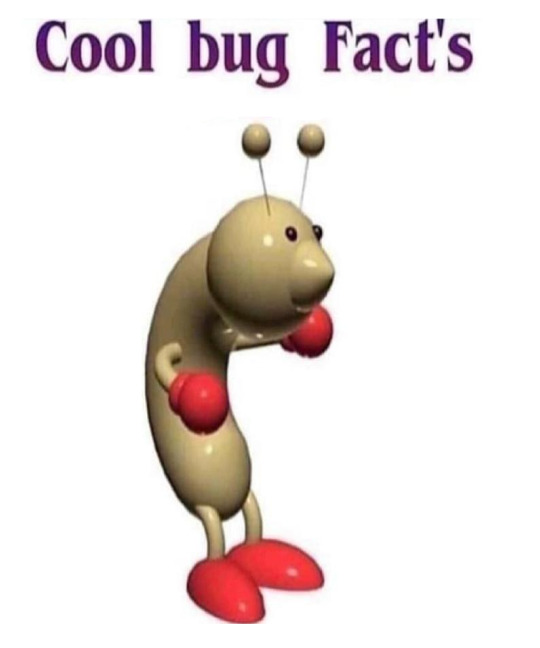
✨cool bug facts's✨
The Artipus floridanus, or the little leaf weevil! (Also called the little leaf notcher.)
They look like ༼ ◕ ◕ ༽
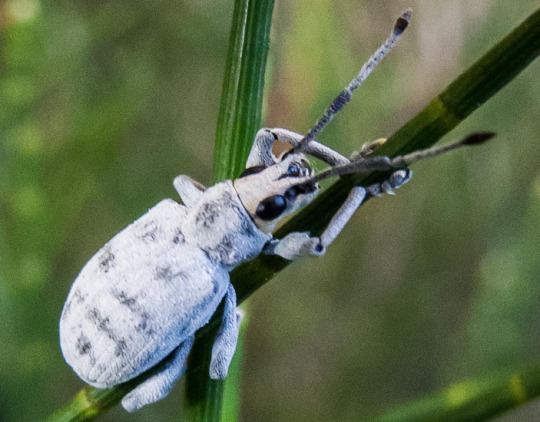
The anatomy of these glaucous insects!!!
They are one of the few weevils classified as a citrus root weevil, alongside the Diaprepes root weevil (Diaprepes abbreviatus), the blue-green citrus root weevil (Pachnaeus litus & Pachnaeus opalus), and the Fuller rose beetle (Asynonychus godmani). The males grow between 5 to 7 millimeters long on average. The females can grow as long as 14 millimeters.
The larvae are around 9.5 millimeters long. The males are smaller than the females, which is uncommon for beetles, but common for weevils and most other insects. They are the only species in the genus Artipus found in the continental U.S., but they're limited to Florida. They have longer and narrower elytra than other citrus weevil species. While most citrus weevils have small hairs behind their eyes, the little leaf notcher does not. They have purple splotches all throughout their body.
Diet.
They eat, somehow among other things, citruses, oranges, grapefruit, lime, peanut, avocado, mango, lima bean, Surinam cherry, and collards. They eat the leaves off of citrus trees (Which can cause leaf injury). The males don't eat as much as females, and cause far less damage. The larvae eat the roots of citrus trees, causing the trees to become predisposed to Phytophthora spp, which is a root rot pathogen, making the trees rot without any visible cause. This pathogen might also cause sudden death in trees.
Behavior.
The females lay around 1,220 eggs in their lifetime, and only lay them under dark or dim lighting conditions.
Similarly, they prefer to eat under darker lighting conditions. The adults will only emerge April through July, and then take a break for a few months, emerging once again in October through November.
Habitat.
They live in Florida and the Caribbean area, particularly the Bahamas, and the American Virgin islands.
Their host plants are the lantana, sea grape, bottlebrush, rose, hibiscus, Australian pine, azalea, and sea oats. The larvae build small chambers in their excrement where they pupate for 14 to 20 days. The adults will only emerge depending on the temperature and precipitation. They usually prefer hotter temperatures and low precipitation.
#bugs#insects#beetles#weevils#true weevils#curculionidae#little leaf weevil#little leaf notcher#artipus floridanus#bugblr#entomology#coleopterology#cool bugs#cool bug facts#cool bug's#cool bug fact's
12 notes
·
View notes